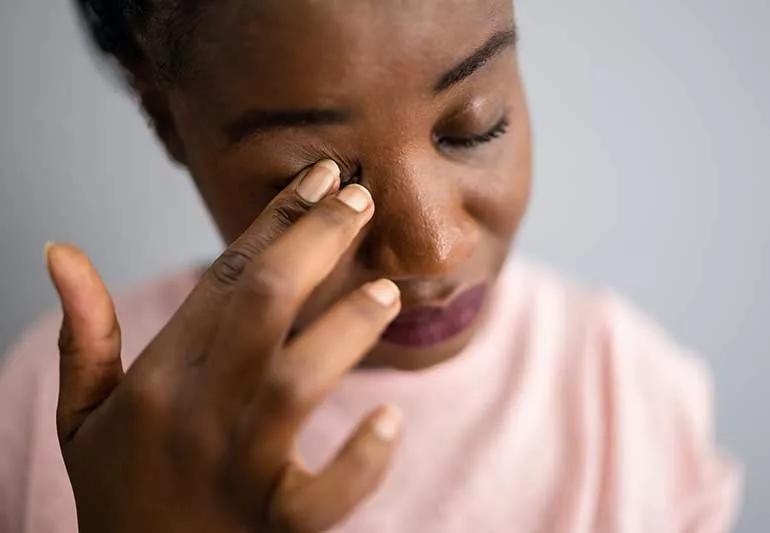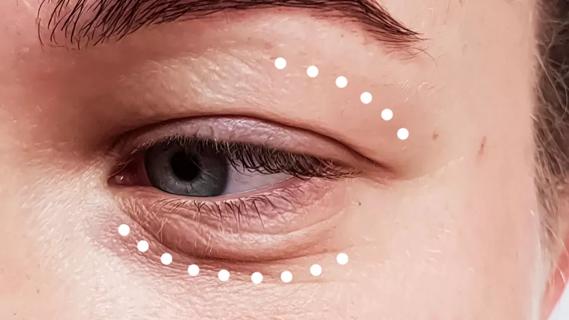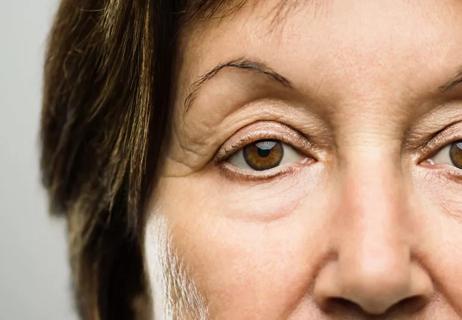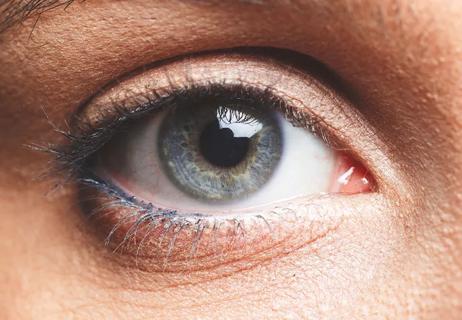Doing so can cause a severe infection, damage to your eyelid or even a corneal abrasion

Oh my, you’ve got a stye.
Advertisement
Cleveland Clinic is a non-profit academic medical center. Advertising on our site helps support our mission. We do not endorse non-Cleveland Clinic products or services. Policy
Regardless of how you got the stye — maybe you rubbed your eyes with dirty hands, used expired or contaminated cosmetics or shared eye makeup — you’re now left with a painful red bump on the edge of your eyelid.
“A stye forms when bacteria enter the oil glands in the eyelids. This leads to inflammation, as well as the formation of a painful lump,” explains family physician Matthew Goldman, MD. “Also known as a hordeolum, a stye is typically caused specifically by Staphylococcus aureus bacteria.”
In addition to pain and discomfort, a stye can literally be an eyesore, making you want to do everything you can do to get rid of it.
So, should you pop a stye? While there are a variety of home remedies you can use to alleviate symptoms, like crusting along the eyelid — you should think twice before you attempt popping your stye.
Dr. Goldman explains why popping a stye isn’t such a good idea and what you should do instead.
Don’t give in to your temptation to pop a stye, urges Dr. Goldman.
“It’s best to avoid squeezing and/or attempting to pop a stye on your own due to potential risks and complications,” he says.
And while it may not be the answer you were hoping for, if you sit tight and try other home remedies, like applying a warm compress, you’ll more than likely see results soon.
Advertisement
“A stye will usually resolve within one to two weeks with proper home care,” says Dr. Goldman. “The exact amount of time for healing can vary depending on the severity of the stye and the individual.”
Styes are very common, affecting all races, sexes and ages — though adults are more prone to blockage.
But what happens if you do pop a stye? Though it may be tempting to pop a stye, doing so comes with potential risks like:
You also want to refrain from rubbing or touching your eyelid and avoid wearing makeup or contact lenses until the stye has gone away.
Try the following remedies to alleviate symptoms and encourage healing instead of attempting to squeeze and/or pop a stye:
If a stye persists and forms a noninfectious lump caused by blockage and inflammation of an oil gland called a chalazion, surgical drainage may be considered. But surgery is rarely necessary.
“Consider seeing a healthcare provider if a stye doesn’t improve within one to two weeks with home remedies, becomes extremely painful or affects your vision, is a recurrent issue and/or you develop fever or experience any concerning symptoms,” advises Dr. Goldman.
Advertisement
Learn more about our editorial process.
Advertisement

Many factors, like eyelid irritation, cosmetic lash procedures and underlying health conditions, can affect your eyelashes

Both chalazia and styes appear as bumps on your eyelid — but styes are typically painful

Keep your eyes clean and try to stay makeup- and contacts-free to help move healing along

The procedures take different approaches to eliminate saggy, baggy skin around your eyes

Injections or surgeries can give aging eyes a lift

This glaucoma drug can also thicken lashes, just note side effects

Your eyes could be burning because of allergies, elevated salt levels, dry eyes and more

One is a raised yellow spot on your eye, the other is a fleshy growth

Babies can get congested easily, but you can calm their cough by keeping them hydrated, using nasal drops and running a humidifier

Weight loss may cause loose, sagging skin and muscle loss to your rear

Several conditions, like vitiligo and fungal infection, can cause a loss of pigmentation, leading to white spots or patches on your skin